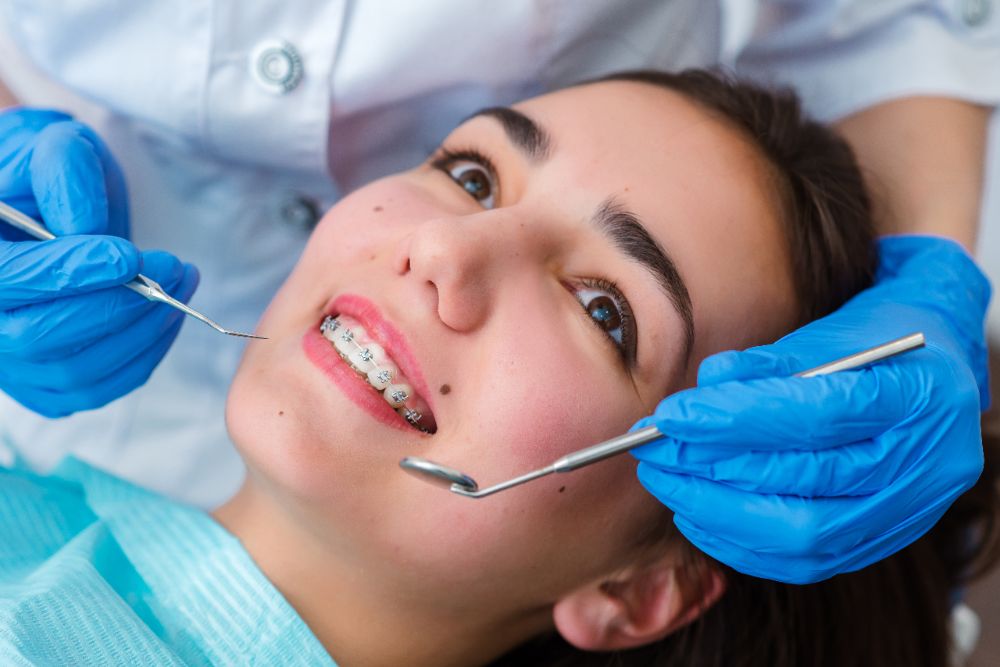Specialist Cumming Braces and Aligners: What to Know Before You See
Specialist Cumming Braces and Aligners: What to Know Before You See
Blog Article
Comprehensive Guide to Orthodontics Procedures for Fixing Dental Misalignments
Recognizing the intricacies of each treatment, including their devices, advantages, and prospective disadvantages, is important in making notified decisions regarding one's orthodontic therapy. As we navigate through the thorough guide to orthodontic procedures for correcting dental imbalances, the detailed details of each approach will unravel, losing light on the path toward a practical and unified dental placement.
Orthodontic Procedures Summary

Along with clear aligners and standard braces, orthodontists may also advise other treatments like headwear, palatal expanders, or retainers to deal with particular placement concerns (orthodontics). These treatments are tailored to each person's unique requirements and may involve a combination of treatments to achieve the preferred results. Normal modifications and tracking are essential components of orthodontic treatment to make sure development is on track and to make any kind of essential alterations in the process. By undertaking orthodontic procedures, individuals can not just achieve a straighter smile but additionally enhance their overall dental health and function.
Conventional Braces: Exactly How They Work
When taking into consideration orthodontic treatments for oral misalignments, standard braces attract attention as a reliable method for correcting teeth positioning. Typical braces contain braces, wires, and bands that function with each other to use continuous stress on the teeth, gradually moving them right into the wanted placement. The braces are connected to the teeth using an unique adhesive, and the wires are threaded with the braces. By adjusting the stress of the wires, orthodontists can control the direction and force used to each tooth, leading them into proper positioning over time.
One trick element of exactly how typical braces work is the process of bone renovation. As pressure is put on the teeth with the dental braces, the bone bordering the teeth is improved to support the brand-new tooth placements. This renovation is crucial for the long-term security of the remedied placement. Clients will certainly need normal adjustments at the orthodontist's workplace to ensure the dental braces continue to use the proper stress for reliable teeth activity.
Unseen Aligners: Cons and pros
Invisible aligners offer a convenient and very discreet choice to typical braces for correcting dental misalignments. These clear, customized trays are virtually unnoticeable when put on, making them an enticing choice for people seeking an extra cosmetically pleasing orthodontic treatment. One of the primary advantages of invisible aligners is their removability, permitting less complicated maintenance of dental hygiene contrasted to conventional braces. Clients can remove the aligners prior to eating or brushing their teeth, lowering the danger of food getting embeded click here for more the device and streamlining the cleansing process.

Surgical Orthodontic Options
Surgical treatments in orthodontics present feasible alternatives for dealing with complicated oral misalignments that may not be effectively resolved with standard orthodontic therapies. While unseen aligners and standard braces can remedy many orthodontic concerns, particular cases call for surgical intervention to accomplish optimal results. Surgical orthodontic alternatives are generally advised for serious malocclusions, considerable jaw disparities, and situations where the underlying bone framework requires modification to accomplish appropriate positioning.
One typical medical orthodontic treatment is orthognathic surgical procedure, which involves rearranging the jaws to remedy useful problems such as difficulty chewing or speaking. This surgery is usually executed in partnership with an orthodontist that helps align the teeth before and after the treatment. Surgical orthodontics may likewise entail treatments to subject affected teeth, remove excess periodontal cells, or reshape the jawbone to produce an extra unified facial profile.
Prior to thinking about medical orthodontic alternatives, people go through an extensive this content analysis to identify the necessity and possible advantages of such treatments. orthodontics. While surgical treatment might appear overwhelming, it can significantly enhance both the function and aesthetic appeals of the smile in cases where traditional orthodontic therapies fail
Retainers and Post-Treatment Care

Post-treatment treatment entails complying with the orthodontist's directions vigilantly. This may include appropriate dental hygiene techniques, going to follow-up visits, and using the retainers as recommended. Failing to adhere to post-treatment care directions can result visit our website in regression, where the teeth slowly return in the direction of their original positions. Regular retainer wear, good oral health, and regular oral examinations are important for keeping the results achieved with orthodontic surgical treatment and making sure the long-term stability of the corrected oral positioning.
Conclusion
To conclude, orthodontic procedures use numerous choices for fixing oral misalignments. Typical dental braces use steel brackets and wires to change teeth right into correct placement. Invisible aligners provide a more very discreet alternative yet might not appropriate for all cases. Surgical orthodontic alternatives are readily available for more severe imbalances. Retainers are commonly used post-treatment to preserve the brand-new alignment. Overall, orthodontic procedures can properly boost dental wellness and aesthetic look.
As we navigate through the thorough overview to orthodontic treatments for correcting oral misalignments, the elaborate details of each approach will unravel, shedding light on the course toward a practical and harmonious oral positioning. - cumming orthodontist
One of the most common orthodontic treatments is the usage of dental braces, which consist of metal braces and cords that apply mild pressure to gradually change teeth into the wanted setting.When thinking about orthodontic therapies for oral imbalances, conventional dental braces stand out as a tried and true technique for correcting teeth positioning. Furthermore, unnoticeable aligners might not be appropriate for intricate orthodontic concerns that need even more substantial teeth movement, as they are usually recommended for moderate to modest situations. Retainers are customized orthodontic devices developed to hold teeth in their fixed placements after the completion of orthodontic treatment.
Report this page